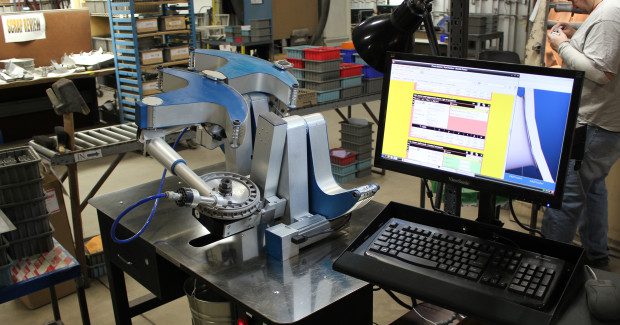Dealing with Confidentiality Agreements
Because customers, suppliers and employees change more frequently than in the past, the use of Confidentiality Agreements is growing as manufacturers protect their intellectual property in materials development, automation, fabrication and machining processes, and other trade secrets that are not patented. Here are some points to consider when asking for and receiving protection under Confidentiality Agreements.
Posted: February 26, 2016
These days it seems that, at every turn, someone is seeking to have a Confidentiality Agreement signed or company policy requires that one be signed before proceeding with commercial discussions. Once something that only high-tech non-industrial firms worried about, today these agreements are in use everywhere, including brick-and-mortar manufacturers. Agreements purporting to protect confidential or proprietary information from disclosure or misuse by third parties are also called “Nondisclosure Agreements,” “Proprietary Information Agreements,” or “Trade Secret Agreements,” among others. In this column, I will refer to such agreements generically as “Confidentiality Agreements.”
The growth in the use of Confidentiality Agreements in more traditional companies is in large part attributable to a growing awareness of the importance of intellectual property to many different types of businesses. Intellectual property in materials manufacturing and machining usually takes the form of internal know-how (sometimes referred to as “tribal knowledge”) and other trade secrets (rather than registered patents), so it is important that contractual protection for confidential and proprietary information be in place to protect this information. Also, customers and suppliers change more frequently than in the past, so proprietary information is being shared more often with unfamiliar people.
Furthermore, today’s workforce is on the move. Gone are the days when employees stayed with the same employer their entire career. All of this movement leads to a greater concern about the protection of confidential and proprietary information that is shared with suppliers, customers, consultants, employees, potential joint venture partners or people who are interested in investing in a business. So let’s review several important points to think and be aware of when asking for and receiving protection under Confidentiality Agreements.
WHAT IS PROTECTED?
Please don’t ignore the definition of “Confidential Information” in any form of Confidentiality Agreement on the assumption that it is all “boilerplate.” On the contrary, while the definition of Confidential Information is similar from contract to contract, before signing an agreement, review it to ensure that the information to be protected is described with reasonable specificity. Anyone seeking to enforce a Confidentiality Agreement will be more successful if the information that is wrongly used or disclosed is well identified inside the Confidentiality Agreement. And, on the other hand, anyone who is the recipient of information has a legitimate interest in making sure that he or she knows what it is that is to be protected.
For both reasons, specificity is best, provided that the description is not so narrow that it excludes information that should be protected.
BEWARE DISGUISED NON-COMPETE
It is not uncommon to see language in a Confidentiality Agreement that is, in reality, non-competition language. For example, a customer’s Confidentiality Agreement might contain a provision prohibiting a supplier from manufacturing parts of the same type that are being manufactured for the customer for other customers of the supplier, or a consultant from serving clients in the same industry. While it is reasonable to ask a supplier to refrain from using a customer’s drawings in connection with work for a different customer, it is not reasonable to ask the supplier to refrain from making the same type of part for a different customer. Such a restraint might violate the antitrust laws, but it is expensive and time consuming to prove it. It is increasingly common for non-compete language to be included in Confidentiality Agreements, so read carefully and object to language that is unacceptable.
Likewise, employees signing Confidentiality Agreements for their employer should be very careful to understand any non-compete language that is included; a non-competition covenant is significantly more onerous than language requiring that proprietary information be retained in confidence, because it could prevent an employee from being able to obtain a better job.
PROTECT INFORMATION THAT IS RECEIVED – AND BE CAREFUL WHAT YOU GIVE
Even if a perfect Confidentiality Agreement is signed by a third party, if that third party is disreputable and untrustworthy, there is going to be trouble. Do not give a disreputable or untrustworthy party confidential information, whether you have an agreement in place or not. Litigation is costly and time consuming, and worse – by the time a breach of a Confidentiality Agreement is discovered, the “horse” could already be “out of the barn” and secret information has been shared in a manner that is damaging to the business. Also, if a Confidentiality Agreement is signed to benefit a third party, care should be taken to protect proprietary information that is received from being used for commercial purposes or being disclosed to others. Don’t just sign and forget.
SPECIAL CAUTION ABOUT DURATION
Recipients of confidential information frequently ask that the term of a Confidentiality Agreement be limited in duration. Sometimes this will be written as a certain number of years (e.g., three years) and sometimes it will be a formula (e.g., the “later of three years after the last date of disclosure of Confidential Information to Receiving Party or three years after the date of this Agreement”). It is reasonable to request limited duration and to grant it. However, anyone who is sharing information must be very careful to exclude the protection of trade secrets from any time period limitation. Trade secrets are defined generally as information that derives independent economic value from not being generally known to others who could derive economic value from knowing it, and that is the subject of reasonable efforts to maintain its secrecy. Trade secrets have unlimited duration under most state law, so long as the owner continues to meet the criteria for trade secrets under applicable law.
All of this means it is important to except trade secrets from the general expiration provision of the Confidentiality Agreement (e.g., “The obligations of the Receiving Party under this Agreement will expire three years after the date hereof; provided that the obligations of nonuse and nondisclosure hereunder with respect to trade secrets (as defined under applicable state law) will continue for so long as such trade secrets are entitled to protection under applicable state law.”)
A WORD ABOUT FOREIGN LAW AND LIQUIDATED DAMAGES
Be thoughtful about signing a Confidentiality Agreement governed by foreign law. Because application of any non-U.S. law can contain traps for the unwary, it is best practices to consult a lawyer in the country in question before accepting a Confidentiality Agreement governed by that country’s law. In addition, sometimes a party will seek to include a “liquidated damages” provision in a Confidentiality Agreement. Liquidated damages are a specified amount that the parties agree will be paid upon a specific breach, without having to prove actual damages. It is important to understand the ramifications of agreeing to pay liquidated damages under these circumstances. Be careful of agreeing to pay a large lump sum in the event of a breach that in reality caused only minor or no harm.
Confidentiality Agreements are increasingly used in many industries, including traditional manufacturing. Read carefully (whichever side you are on) before using or signing a Confidentiality Agreement, to ensure that it is accurate, tailored for the situation, and does not contain any provisions of concern. Do not hesitate to suggest edits to the form when necessary or appropriate – rare is the circumstance in which an informed and knowledgeable party simply signs a form Confidentiality Agreement without at least a few thoughtful and protective changes!














